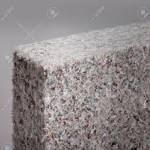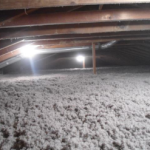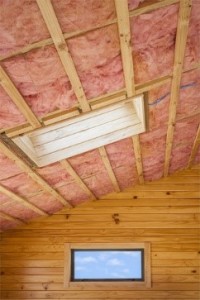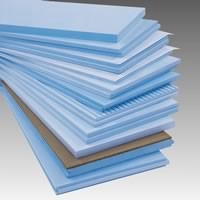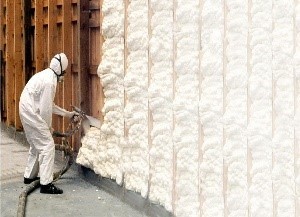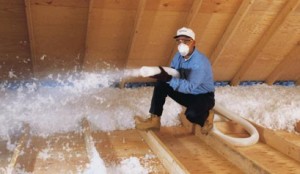Most Common Types of Materials for Insulation
Spray Foam, Fiberglass, Cellulose, and Rigid Foam
According to the Department of energy it is possible to save up to 30% on your energy bills by placing adequate insulation in your attic along with exterior walls, ceilings, basement walls, crawl space and floors. This is of course all depending on your geographic locations. (See map towards bottom)
Cellulose Insulation
R-Value- 3.8 per inch
Old, shredded newspapers are the base of Cellulose insulation. These newspapers are thinly shredded and then treated so they will not be flammable or combustible and also resistant to mold. The process of installing cellulose is easy. All you need to use is a blower unit. The blower which can used to blow into wall cavities by
Fiberglass Batts
R-Value: 3.2-3.8 per inch
Fiberglass batts have variations of width and thickness. Loose-Fill insulation tends to shift and blow around very easily. Batt on the other hand can be moved easily and placed aside if you need to a space for tasks such as placing wires or light fixtures, and framing the attic. Also, each batt has to be placed by hand and many also have to be cut. It is a difficult task to ensure that energy efficiency is maximized.
Rigid Foam
R-Value: 3.8-8.7 per inch.
Rigid foam comes ready-made with panels of varying sizes and thickness. Extruded Polystyrene, Expanded Polystyrene and Polyurethane are the three most common types of rigid foam. Polyurethane foam has the highest R-Value of insulation. On the outer faces of some foam boards come foil coverings that also act as a radiant barrier. In most cases rigid foam installation takes place in newly constructed structures. However it can be used home upgrades only if it is accurately fit and cut. Often if there are gaps around rigid foam it is filled with spray foam.
Learn More
Spray Foam
R-Value: 6-7 per inch
Spray foam comes out of the sprayer like whip cream. The substance is sticky and will stick to just about anything on you or around you. These insulation are available in spray cans at hardware stores. The advantage of spray foam is the sealing that comes along with the insulation. This kills two birds with one stone- insulation and sealing. Spray can fill crevices, gaps and cracks, stopping the loss of energy pervasive in many homes. Other insulation types do not have this advantage. Foam insulation however is much more expensive than other types of insulation.
Warning: When the process of blowing takes place, you must always be careful not to block the soffit vents on the overhang of the structure. Flow restraining baffles need to be placed to keep the soffit vents clear.
Learn More
Fiberglass-Loose-Fill
R-Value: 3.4 per inch
Fiberglass that is loos-filled is made the same material as fiber glass. They are fine glass fibers. Loose-fill, like cellulose, uses shredded parts to be installed by a blower.
The Windbreaker Effect
While a thick jacket might protect you from the cold, a windbreaker will help ease the effects of the wind. Just like a thin layer can help protect against the harshest elements, air-sealing can keep the warm or cool air inside the home and the undesirable air out. The benefit is elimination of energy loss. The one-two punch of air-sealing and insulation will always mean savings in home energy and increased efficiency

